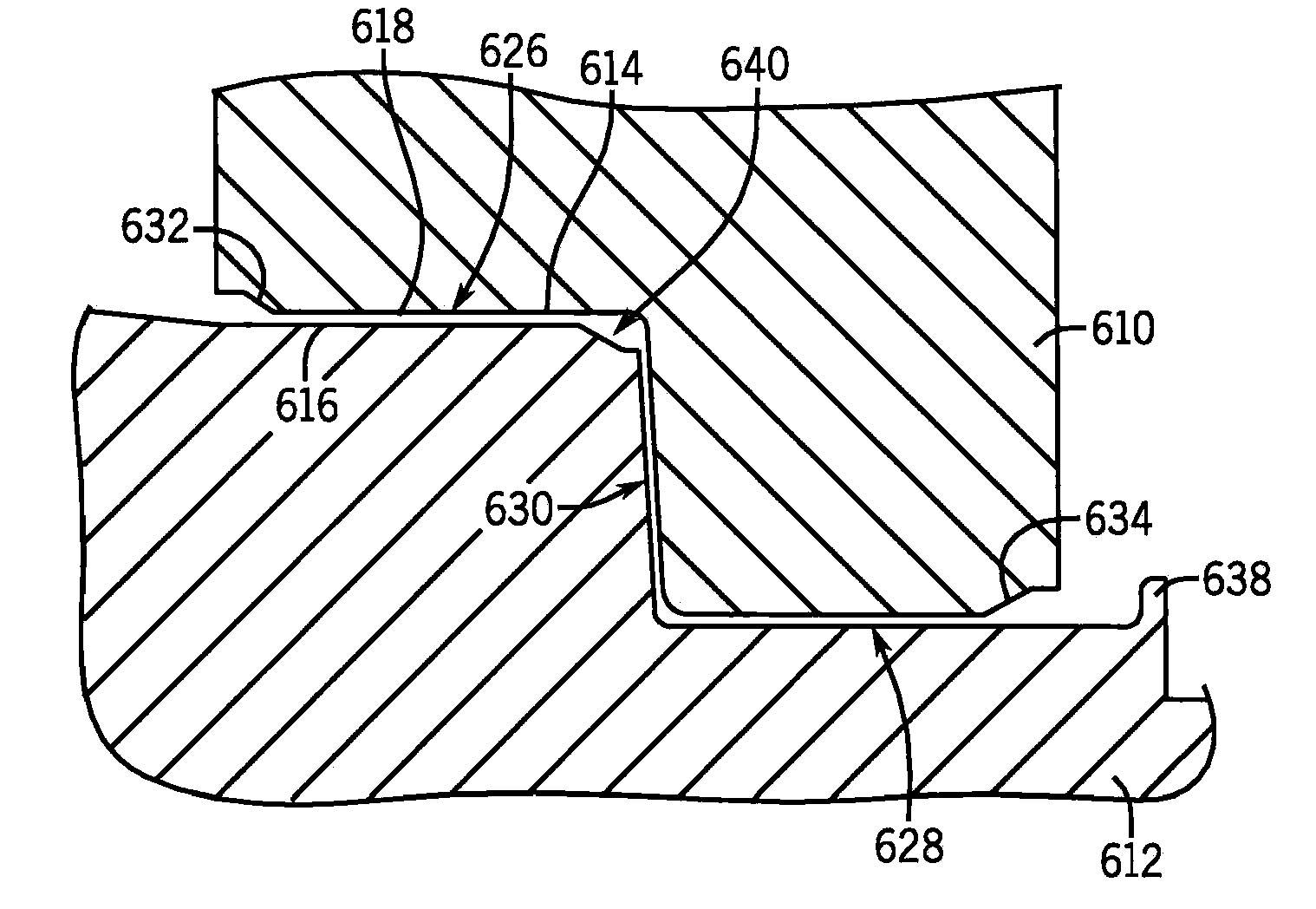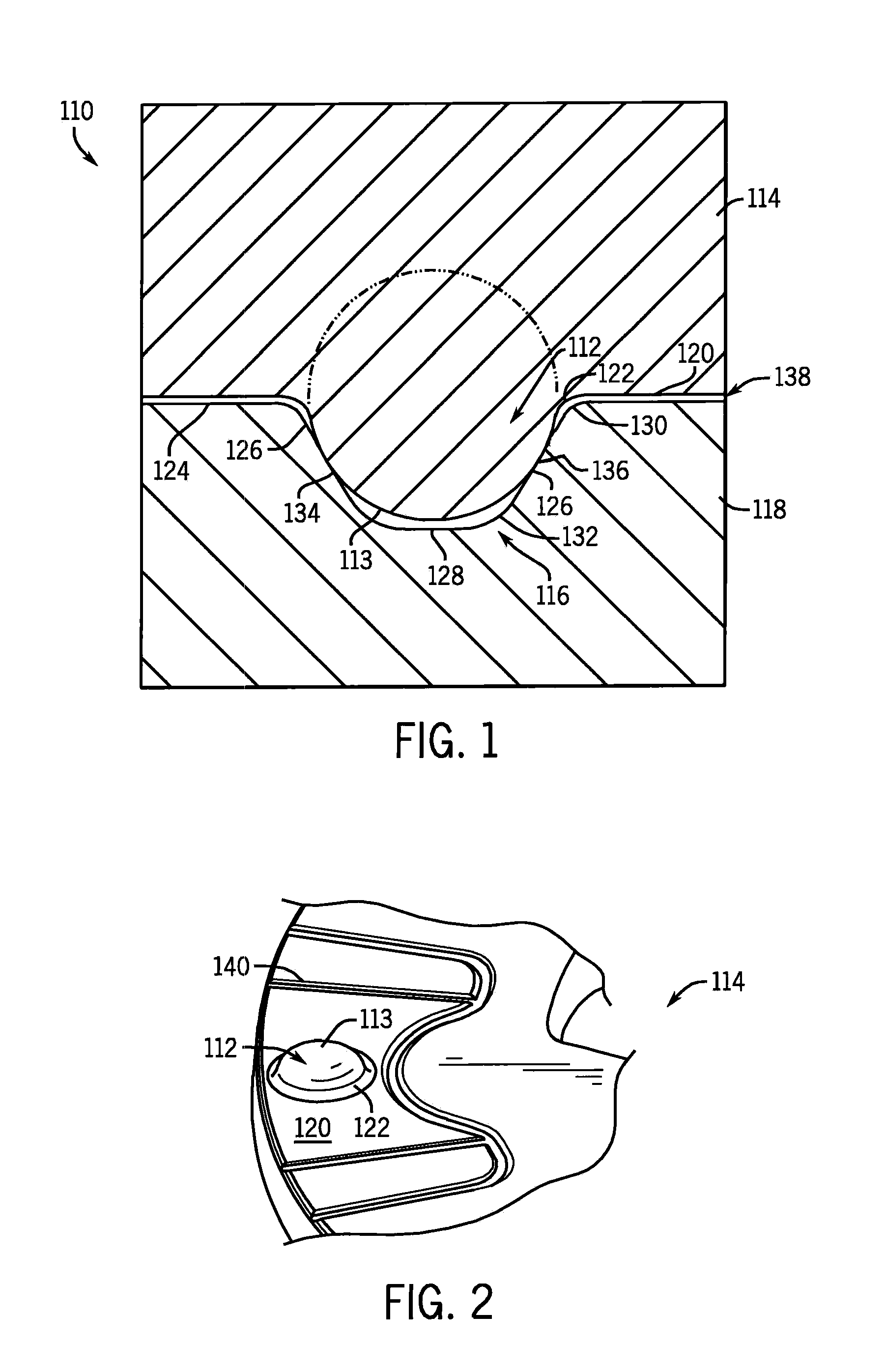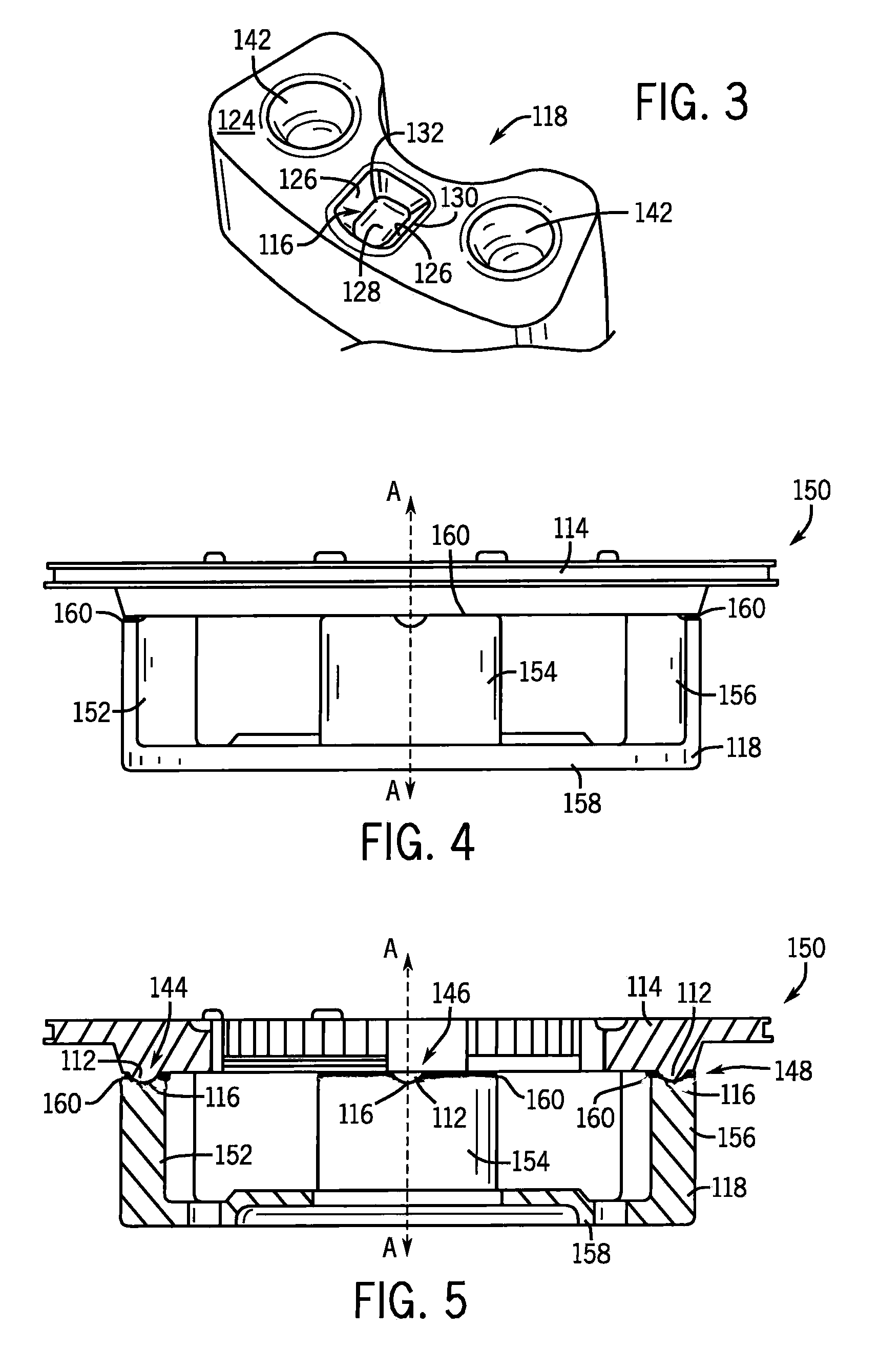Brazed component and method of forming a brazed joint therein
a brazed joint and component technology, applied in the field of brazing, can solve the problems of weakening the brazed joint, improper wetting, and affecting the strength of the brazed joint, so as to reduce the capillary force of the brazed material and reduce the flow of material
- Summary
- Abstract
- Description
- Claims
- Application Information
AI Technical Summary
Benefits of technology
Problems solved by technology
Method used
Image
Examples
Embodiment Construction
[0048]Referring now to FIG. 1, a locating joint 110 is shown. The locating joint 110 includes a projection 112 having an arcuate convex surface 113 on a first component 114 and a recess 116 on a second component 118.
[0049]Referring now to FIGS. 1 and 2, the projection 112 extends from a surface 120 of the first component 114 and may include a transitioning radius 122 between the surface 120 and the arcuate convex surface 113. It should be appreciated that the arcuate convex surface 113 may have other surface geometries including, but not limited to, a semi-spherical surface having a constant radius. The projection 112 may be referred to as the male mating component or by other similar terms.
[0050]Referring now to FIGS. 1 and 3, the recess 116 extends into a surface 124 of the second component 118 and includes opposite-facing angled walls 126 extending down to a bottom 128 of the recess 116. Like the projection 112, the recess 116 may have transitioning radii 130 and 132 between the ...
PUM
| Property | Measurement | Unit |
|---|---|---|
| capillary force | aaaaa | aaaaa |
| distance | aaaaa | aaaaa |
| rotational stress | aaaaa | aaaaa |
Abstract
Description
Claims
Application Information
 Login to View More
Login to View More - R&D
- Intellectual Property
- Life Sciences
- Materials
- Tech Scout
- Unparalleled Data Quality
- Higher Quality Content
- 60% Fewer Hallucinations
Browse by: Latest US Patents, China's latest patents, Technical Efficacy Thesaurus, Application Domain, Technology Topic, Popular Technical Reports.
© 2025 PatSnap. All rights reserved.Legal|Privacy policy|Modern Slavery Act Transparency Statement|Sitemap|About US| Contact US: help@patsnap.com



